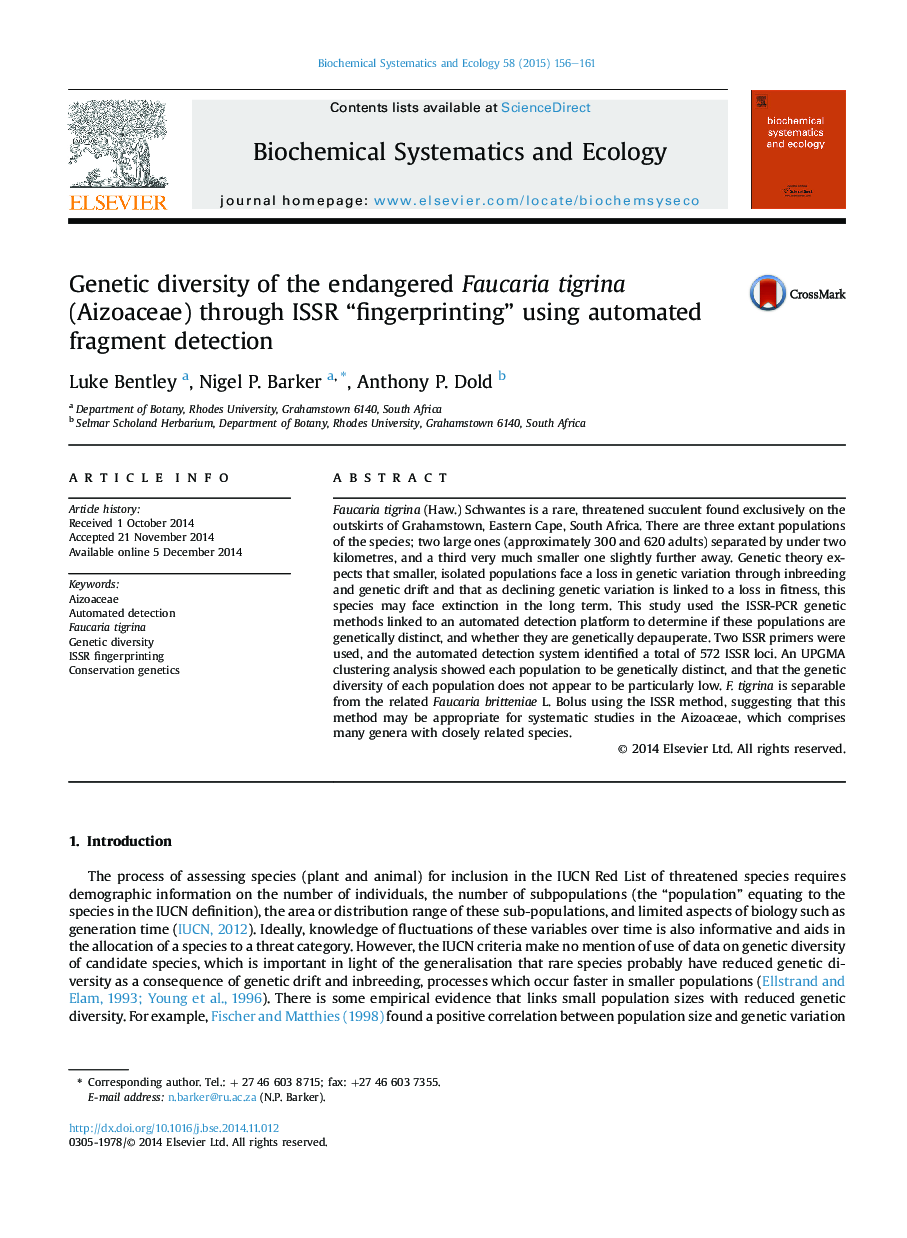| کد مقاله | کد نشریه | سال انتشار | مقاله انگلیسی | نسخه تمام متن |
|---|---|---|---|---|
| 1353880 | 1500408 | 2015 | 6 صفحه PDF | دانلود رایگان |

• Faucaria tigrina (Aizoaceae) is an endangered succulent plant.
• It is only known from three localities in South Africa.
• The ISSR approach coupled with automated detection methods produced 572 bands.
• Each population was genetically distinct, and genetic diversity is not low.
• Each population of F. tigrina was distinct from the congeneric F. brittenii.
Faucaria tigrina (Haw.) Schwantes is a rare, threatened succulent found exclusively on the outskirts of Grahamstown, Eastern Cape, South Africa. There are three extant populations of the species; two large ones (approximately 300 and 620 adults) separated by under two kilometres, and a third very much smaller one slightly further away. Genetic theory expects that smaller, isolated populations face a loss in genetic variation through inbreeding and genetic drift and that as declining genetic variation is linked to a loss in fitness, this species may face extinction in the long term. This study used the ISSR-PCR genetic methods linked to an automated detection platform to determine if these populations are genetically distinct, and whether they are genetically depauperate. Two ISSR primers were used, and the automated detection system identified a total of 572 ISSR loci. An UPGMA clustering analysis showed each population to be genetically distinct, and that the genetic diversity of each population does not appear to be particularly low. F. tigrina is separable from the related Faucaria britteniae L. Bolus using the ISSR method, suggesting that this method may be appropriate for systematic studies in the Aizoaceae, which comprises many genera with closely related species.
Figure optionsDownload as PowerPoint slide
Journal: Biochemical Systematics and Ecology - Volume 58, February 2015, Pages 156–161